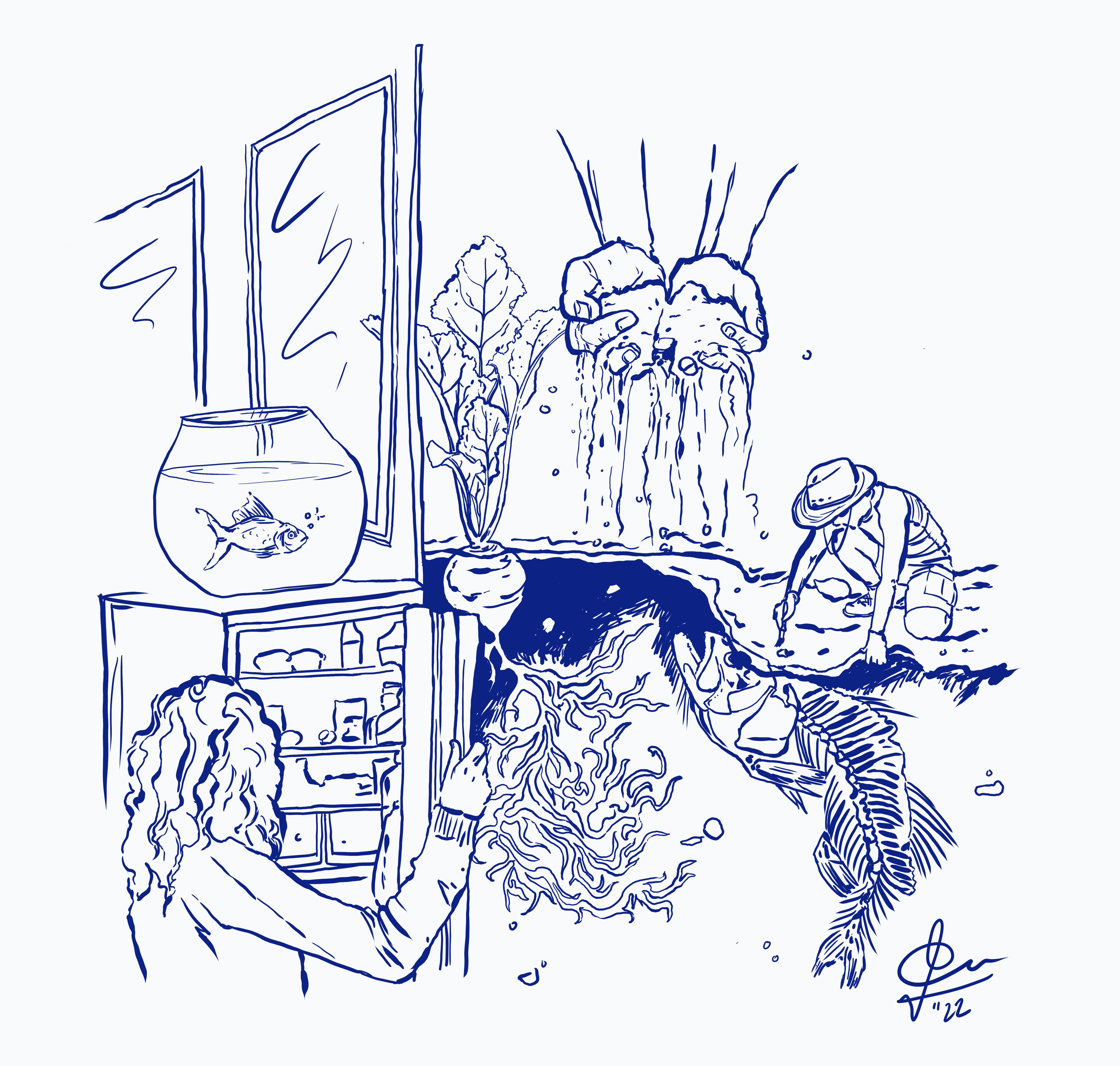Digging and Discovery
Chapter 1 of my graduation Project 2022From burying in the ground to digging in the fridge, what happened?
Stories as old as time only get preserved in the ground. Hidden artifacts buried un- intentionally tell stories that are lost in remembrance. As archeologists carefully recreate and interpretate the old traditions and behaviors from thousands of years ago by things they find hidden away.
Once upon a time, sand was one of the natural mediums that was both most accessible as well as very usefull for preserving, especially for root vegetables. People re-buried roots like carrots to protect them from oxygen and light.1 Sand not only keeps the level of humity just right, it also prevents the veggies from touching, which often ends in rot. Sand of course, only works best for vegetables that grew or ripened in the ground, as it is (or at least should be) logical and preferable that not all vegetables are preserved the same way.2
However, at my student house, at the second floor, the fridge is the chosen hiding spot for most foods. The (somehow chosen to be) white box was introduced in the home around 1913 in America, Indiana. And since then, never left the house. The convenience of such conservation space meant the end of active thinking and engagement with the bought foods. As soon as the food enters the fridge it exits the mind.2 It enabled people to purchase things from the supermarket in bulk (often with an expiration reminder printed on top) and bury it in the fridge for later discovery. As we became less depended on our own knowledge of expiration and preservation, we became more depended on technology.
This blind trust in the fridge especially leads to fruits and vegetables suffering and losing its taste and flavours. How before, our great great great great ancestors observed and knew that root vegetables keep their flavour better when put back in the sand, the current generations often don’t even own a place to bury in, (if you don’t count the fridge).
And it is hard to remember the importance of ground and soil without sand under your fingernails.
With wealth, fridges are getting bigger. That does not only mean we have to dig and dive deeper for our food. The food also disappears more easily. To be discovered later, often covered in some green fluff. The moldy cheese acting as a (un)welcome reminder that expiration very much belongs to the story of keeping, and burying.
Burying’s darker side is closer to our food than we like to believe it. As we, of course, do not only bury everything with the intention of seeing it again. Burying can mark the end and closure of a life lived. It can mean farewell.
However, how we deal with the deceased doesn’t seem to be too far away from the development of the lid. “The Egyptian word for preserving fish by salting and drying was the same as that used to denote the process of embalming mummies. Indeed, every one of these ancient traditions for preserving humans and animals for the afterlife finds a parallel of food preservation [...]”.3
Sources:
-
Walter, Hans. An Overview of food preservation techniques (Department of Food Technology, Technical University Berlin, Germany, 2022) https://www.rroij.com/ open-access/an-overview-of-food-preservation-techniques.pdf
-
Jihyun, Ryou. Save food from the fridge (TedxEutropolis, 2012) https://www. youtube.com/watch?v=-NByNOOaCzI
- Shephard, Sue. Pickled, Potted & Canned: How the Art and Science of Food Preservation Changed the World (New York: Simon & Schuster paperbacks, 2006)

The Sand Fridge
The sand fridge is a ceramic object made to bury your root vegetables in. From potatoes to carrots and beets, everything that comes out of the ground is best preserved in the ground. The Sand Fridge consists out of two big bowls, that keep the root veggies cold and dry and your fingers dirty.
